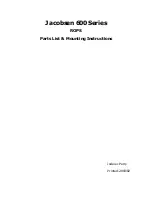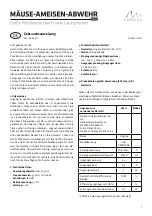
3
Triplett Model 9310-A
2.10
Make sure test leads are properly inserted and seated in the meter’s input
jacks. A loose test lead may cause the user to believe that no hazard exists,
when in fact, dangerous voltages or currents may be present. Failure to
observe this precaution may result in damage to the meter or injury to
the user.
2.11
Do not touch the tips of the test leads when making a measurement. Do not
touch live circuitry when making a measurement. Failure to observe this
precaution may result in damage to the meter or injury to the user.
2.12
Before using the meter, examine both the meter and the test leads for
damage. Do not use the meter if damage (damaged insulation, exposed
metal, cracked case, burnt smell, etc.) is evident. Failure to observe this
precaution may result in damage to the meter or injury to the user.
2.13
Insert the test leads in the jacks specified in the instructions for performing
particular tests. Inserting the test leads in incorrect jacks can damage the
meter and/or injure the user.
2.14
Do not exceed the maximum voltage or current limitations of the meter
(see product specifications). Doing so may damage the meter and/or
injure the user.
2.15
Do not apply voltage or current to the input of the meter when it is set to any
of the Ohms
Ω
ranges. Doing so may damage the meter and/or injure
the user.
2.16
Do not apply voltage or current to the input of the meter when it is set to the
Diode Test
or Continuity Beeper
modes. Doing so may damage
the meter and/or injure the user.
2.17
Do not apply voltage or current to the input of the meter when it is set to the
Capacitance mode. Doing so may damage the meter and/or injure
the user.
2.18
Do not apply voltage or current to the input of the meter when it is set to the
Temperature measurement mode. Doing so may damage the meter and/or
injure the user.
2.19
Do not attempt to measure current on bare conductors that are elevated
above earth ground by more than 600V AC.
Содержание 9310-A
Страница 35: ...35 Triplett Model 9310 A NOTES...




































